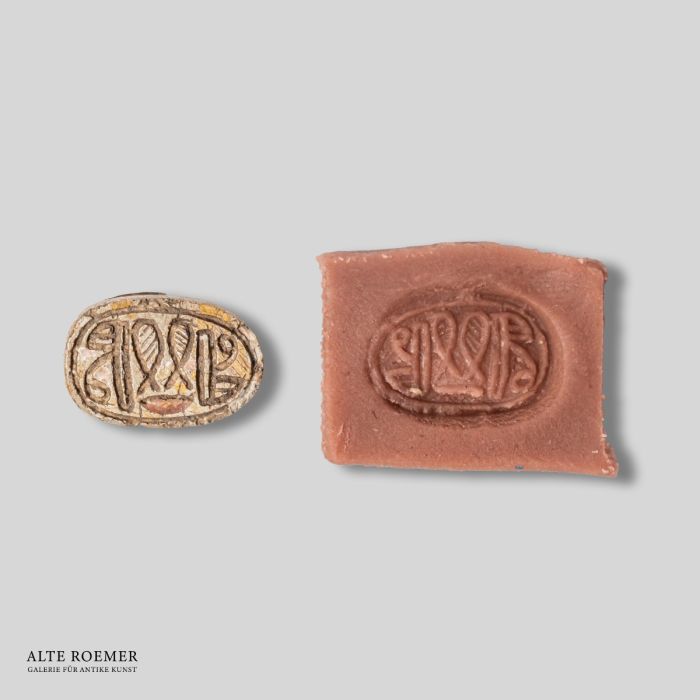Egyptian scarab with protective formula
€350
available
Object number
AR3544-02
| Object: |
Egyptian scarab with lion
|
| Material: |
Steatite.
|
| Period: |
15th to 17th Dynasties, c. 1648 to 1550 BC, Period of Hyksos foreign rule over Egypt. |
| Description: |
Scarab with schematic top side. A longitudinal drill hole allowed it to be threaded as an amulet. The underside is engraved as a seal matrix and features hieroglyphs that are to be interpreted as a protective formula. The flanks of the formula form red crowns.
|
| Background: |
Scarabs originated in ancient Egypt and represent the "sacred scarab" beetle (Scarabaeus sacer). Originally used as an amulet and seal, they embodied rebirth, protection, and the sun. Scarabs became extremely popular. Their distribution extended far beyond ancient Egypt into the Mediterranean region. Depending on the fashion of the time, their shape was more or less naturalistic. In the academic collections and cabinets of modern Europe, scarabs have regained their former popularity. They are among the most important objects for collectors, curators and researchers. The seals boost symbols or hieroglyphs that provide deep insights into the culture of ancient Egypt. |
| Dimensions: |
15mm length.
|
| Condition: |
Nearly perfect condition. Faience coating rubbed off and minimal chipping. Cracks on the upper side. Otherwise preserved in every detail.
|
| Provenance: |
Acquired by us in 2024 from the British auction house Bonhams. Previously in the British Gaze Cooper family collection. Acquired by the collection's founder, Walter Thomas Gaze Cooper (1895-1981), who had a collecting focus on Egyptian art and history.
|
| Literature: |
For a compact book with scholarly insights and practical guidance for scarab collectors we recommend Richard H. Wilkinson, Egyptian Scarabs, Shire Egyptology (2008).
|
| Authenticity: |
We unconditionally guarantee the authenticity of every artefact, all items are subject to our lifetime return policy on authenticity.
|


